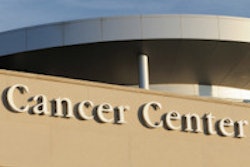
Among patients who are hospitalized for oral cancer, those with medical complications have higher mortality rates and longer hospital stays and incur significantly higher hospital charges, according to a study in Oral Surgery, Oral Medicine, Oral Pathology, Oral Radiology, and Endodontology (November 2011, Vol. 112:5, pp. 581-591).
Cancer patients who developed septicemia had the highest mortality rates, according to the study authors, from the Harvard School of Dental Medicine, the University of Iowa, and the University of Illinois.
More than 36,000 new cases of oral cancers are diagnosed annually and nearly 8,000 people die of these diseases, according to the American Cancer Society. Oral cancer patients may require hospitalization for treatment, including surgery, chemotherapy, and radiotherapy. Such patients may develop complications resulting from poor hospital care or because of their compromised health.
$1.08 billion in hospital costs
For this study, the researchers used the Nationwide Inpatient Sample for 2008 of the Healthcare Cost and Utilization Project provided by the U.S. Department of Health and Human Services' Agency for Healthcare Research and Quality.
Some 17,632 patients, whose average age was 61, were hospitalized in the U.S. in 2008 with oral and oropharyngeal cancers. Most of the patients were admitted on an elective basis (72%), and they incurred higher charges than those admitted via the emergency room. Tongue cancer accounted for the most hospitalizations (6,937), followed by oropharyngeal (3,107) and salivary gland cancers (2,525).
Most of the patients were white (78%); blacks (9.2%), Hispanics (6.7%), and Asian/Pacific Islanders (2.8%) made up the rest.
Some 519 patients died in the hospitals; of these, oropharyngeal patients had the highest mortality rate (4.74%), the researchers found.
One particularly striking finding of the study was the cost related to care. In 2008, oral cancer patients incurred $1.08 billion in hospitalization charges, with mean total charges of $62,885, according to the study. These patients spent a total of 117,472 days in the hospital, with a mean length of 6.66 days.
Medicare paid the most for all cancer treatments (41.3% of all hospitalizations), compared with Medicaid (12.5%) and private insurance (38.7%). And Medicaid patients stayed in the hospital longer than those covered by private insurance.
Cancers involving periodontal tissues had the highest mean hospitalization charges ($103,318), while patients with cancers of the floor of the mouth had the longest stays (9.57 days). Tongue cancer had the highest total hospitalization charges ($414.8 million) and accounted for the most number of days in the hospital (47,904 days).
Medical complications
The medical complication rate was 14.95%; the most common were hemorrhagic complications (2.8%), bacterial infections (2.5%), and mycoses (2.2%).
Cancers of the tongue (p = 0.004), periodontal tissue (p = 0.0001), and floor of the mouth (p = 0.0001) resulted in longer hospitalization than cancers of the oropharynx, whereas cancer of the salivary glands was associated with shorter length of stay (p = 0.0009) compared with cancers of the oropharynx. All complications with the exception of urinary events and nervous system complications were associated with longer length of stay in hospitals (p < 0.05).
Cancers of lip, tongue, periodontal tissue, floor of mouth, and salivary glands incurred significantly higher charges compared with cancers of the oropharynx, the study authors found.
Patients with comorbid conditions, including alcohol abuse, deficiency anemias, metastatic cancers, and chronic pulmonary diseases, incurred higher hospital charges than those without these conditions. And patients with complications, including decubitus ulcers, septicemia, bacterial infections, mycoses and nonhealing wounds, also ran up higher charges.
Patients in large hospitals incurred higher charges compared with those in small hospitals, while patients treated in urban hospitals had lower mortality rates than those who were treated in rural facilities, the researchers noted.
Patients who were treated in teaching hospitals incurred higher charges but had lower mortality rates following complex surgery.
"Teaching hospitals are high-volume centers and consequently their personnel may have more experience in dealing with complications," the study authors noted. "In addition, teaching hospitals may have well-established protocols and processes of care."
Nonhealing wounds
Intensive treatments, such as chemotherapy, may cause immunosuppression and put cancer patients at an increased risk for developing infections and septicemia, the researchers noted. Nearly $17 billion is spent annually in the U.S. to treat septicemia, and nearly 8.5% of cancer patients die from such blood infections.
"In general, occurrence of complications was associated with increased hospital charges, higher in-hospital mortality rates, and prolonged length of stay in hospitals," they wrote. "Among the different complications, nonhealing wounds were associated with the highest mean increase in hospital charges and length of stay in hospital, whereas septicemia was associated with the highest increase in odds of in-hospital mortality."
Future studies should focus on identifying the risk factors leading to the occurrence of these complications and pathways that lead to better outcomes, they concluded.



















